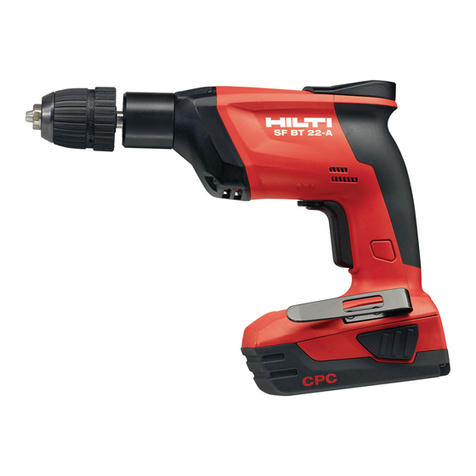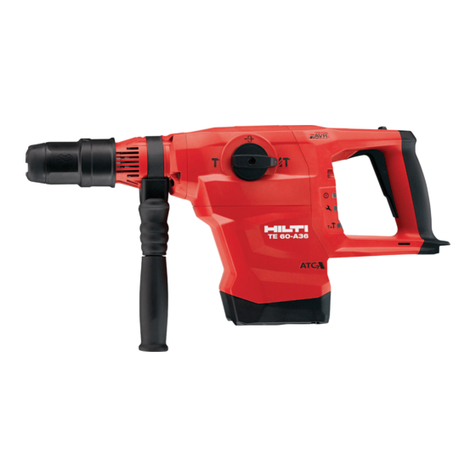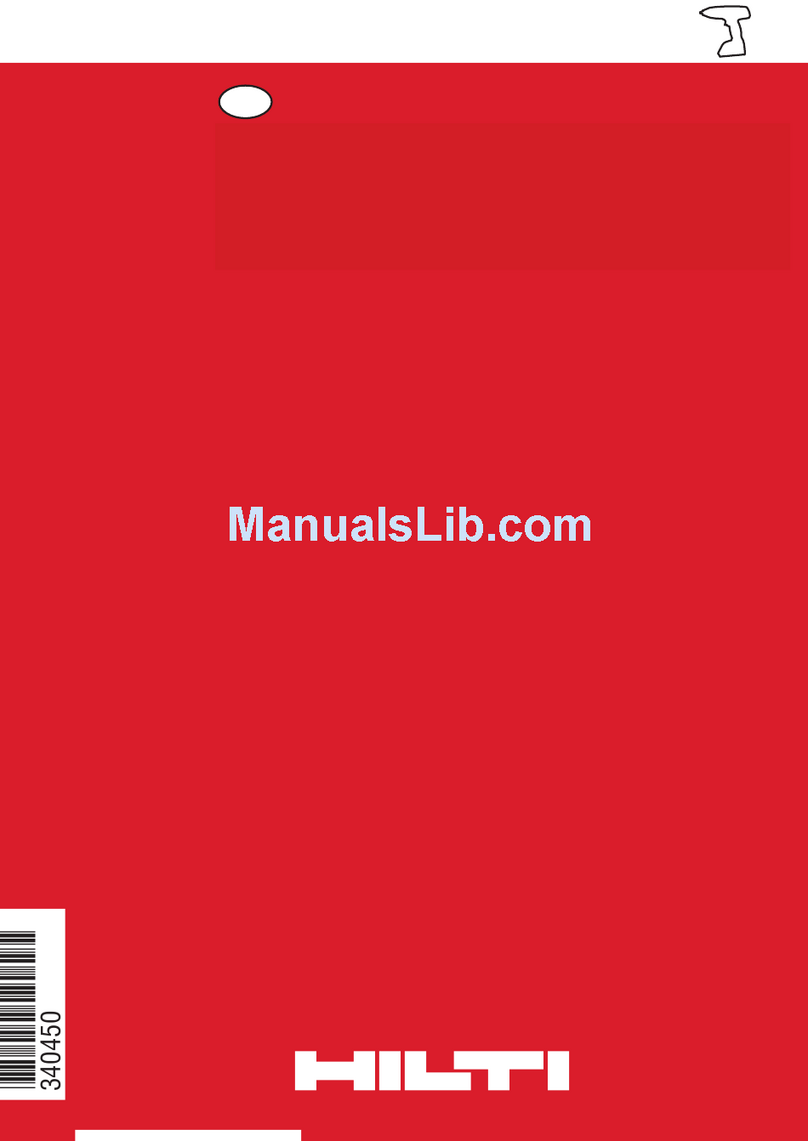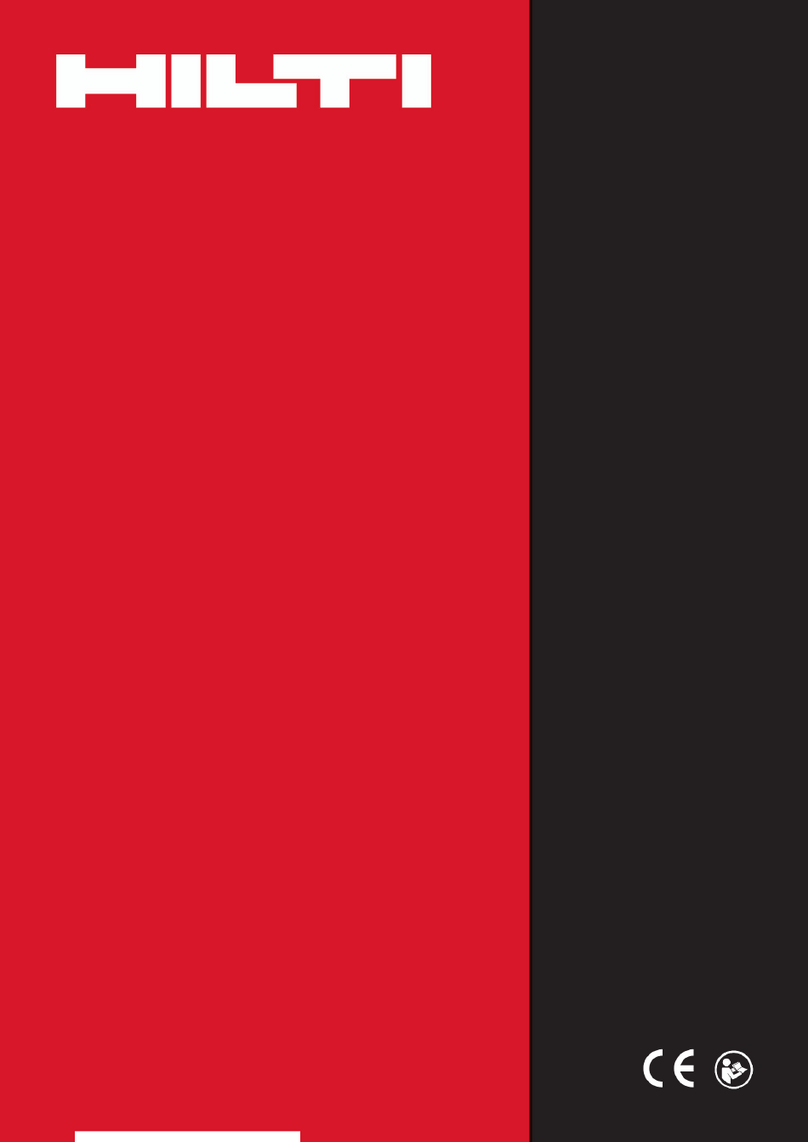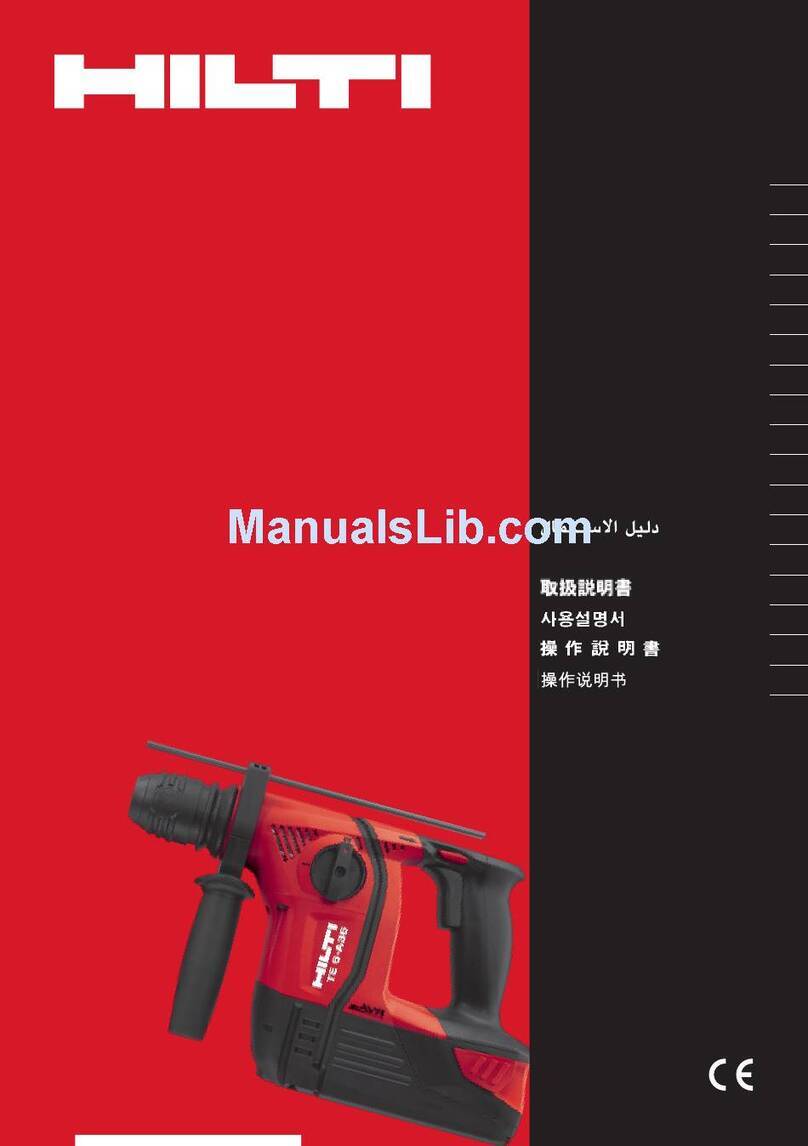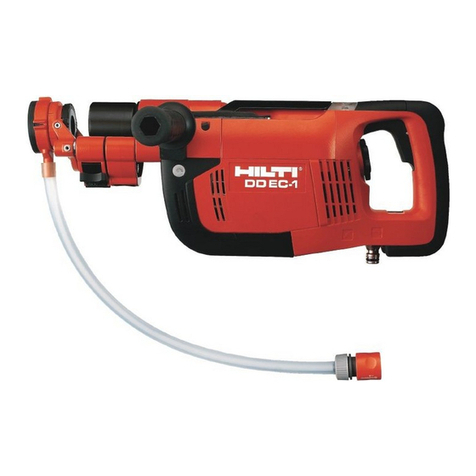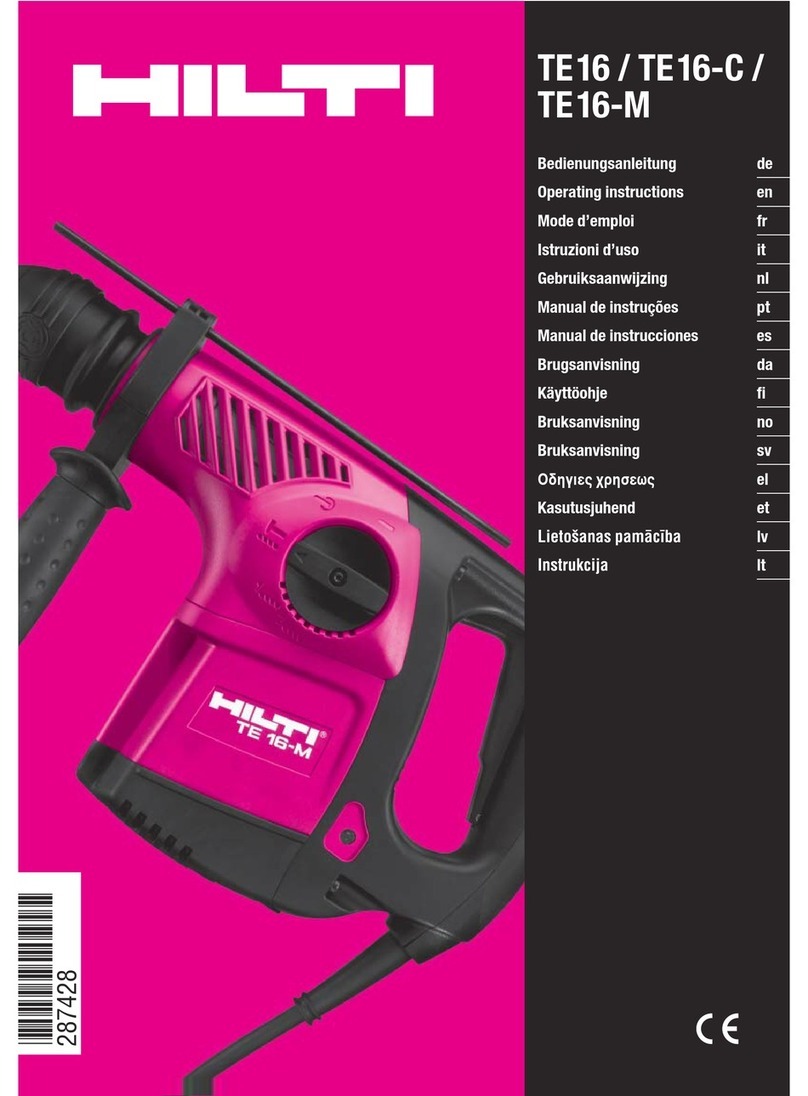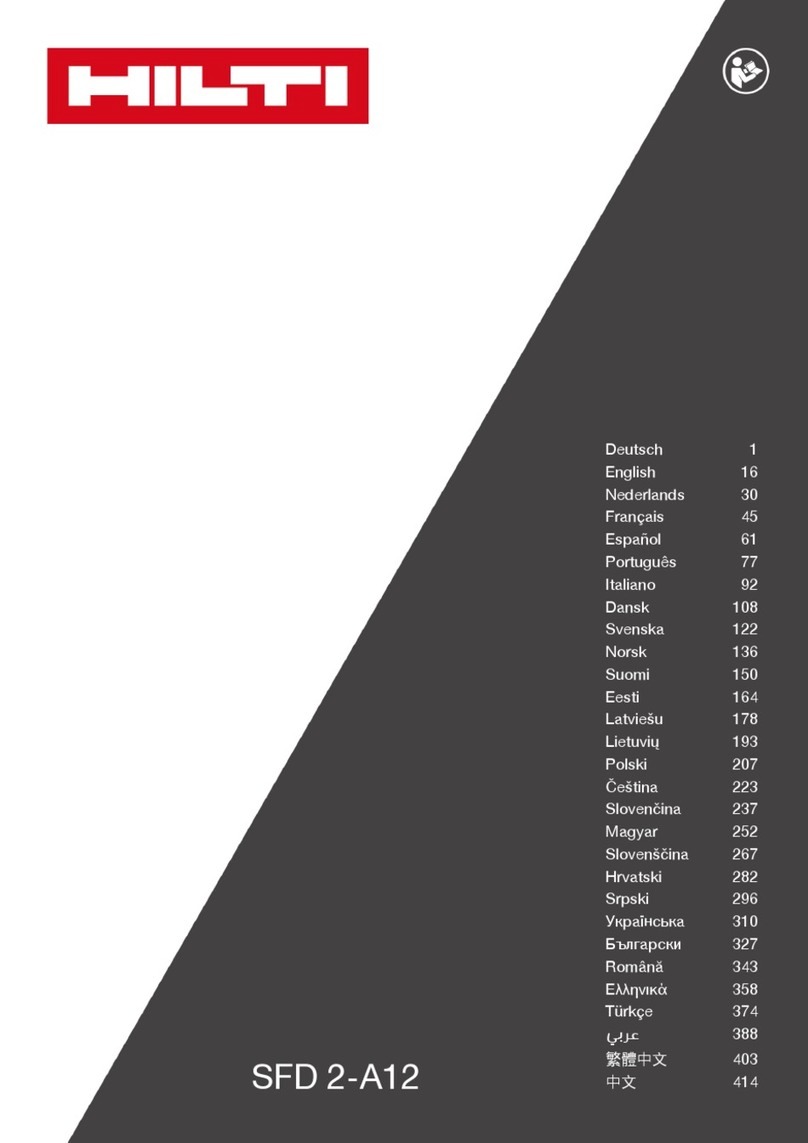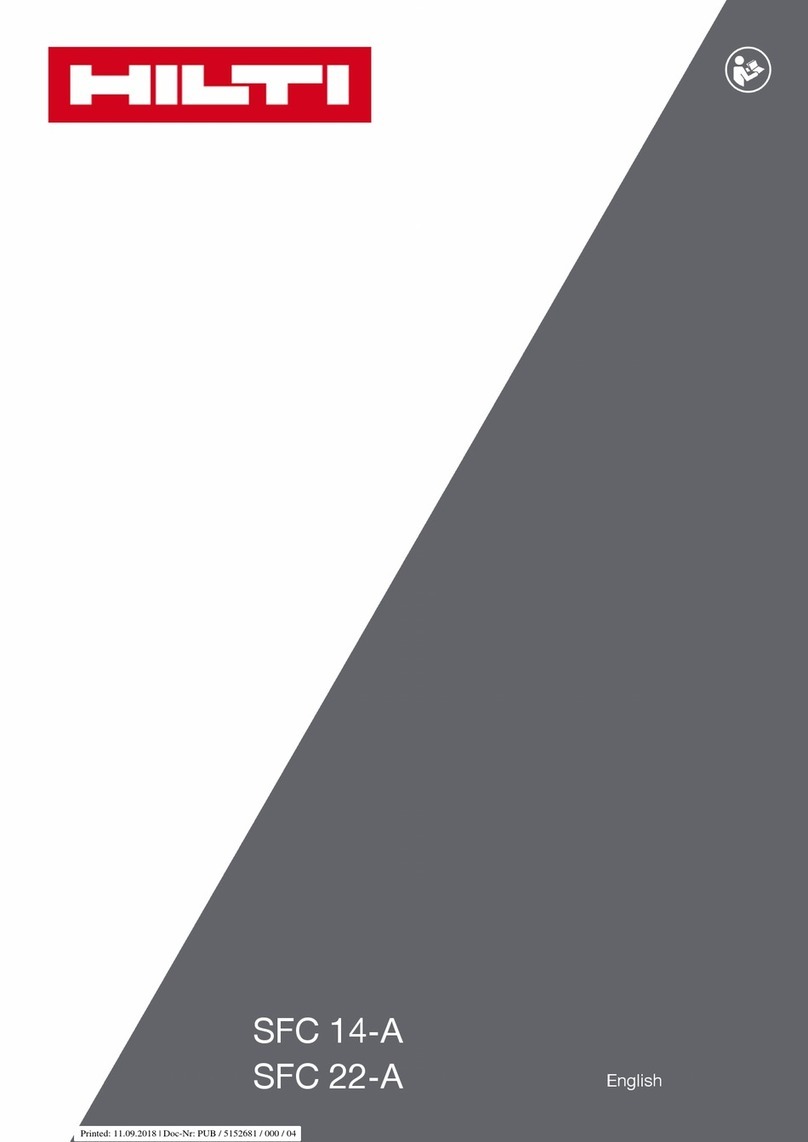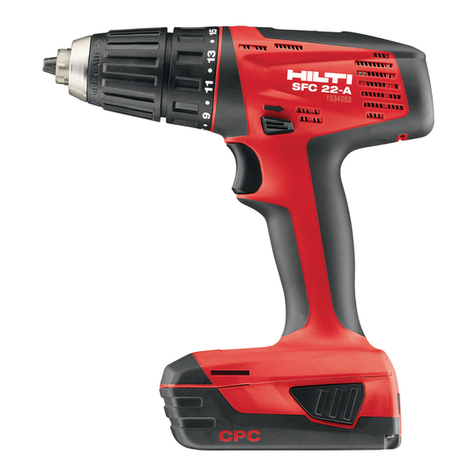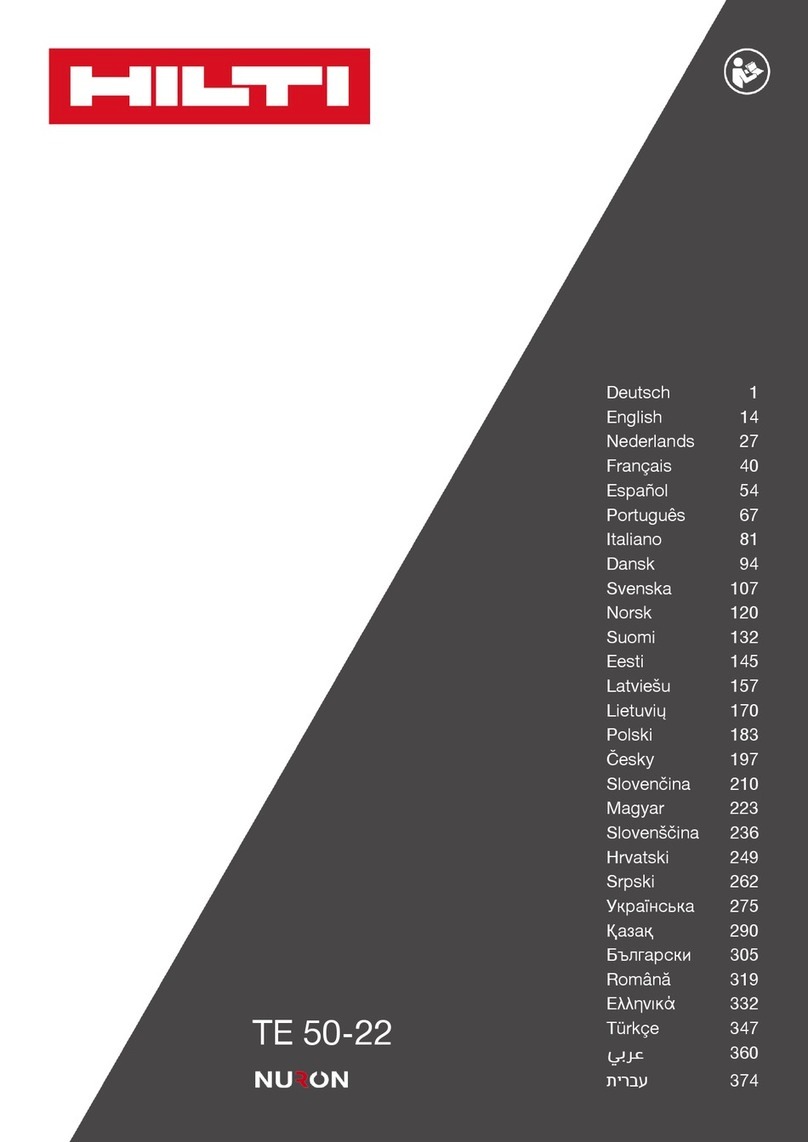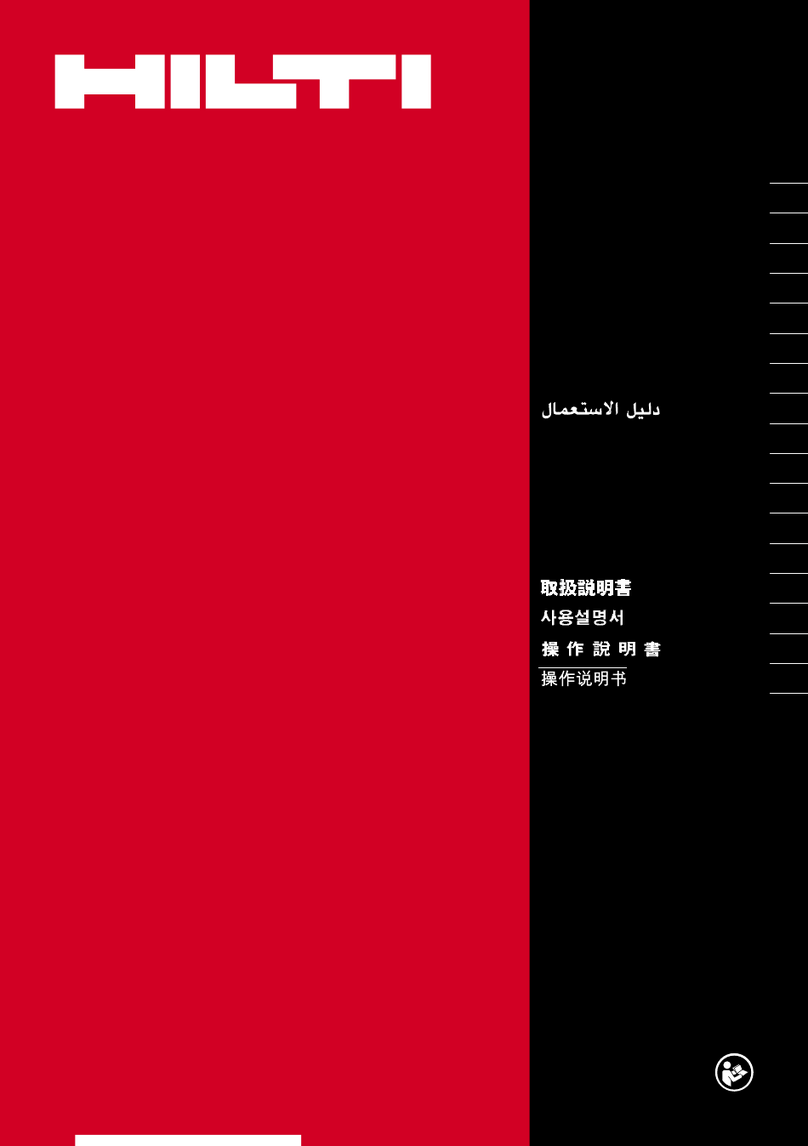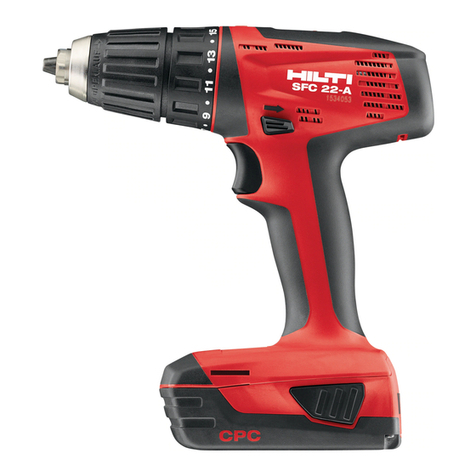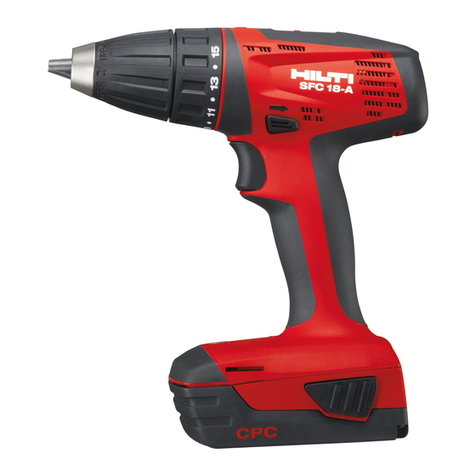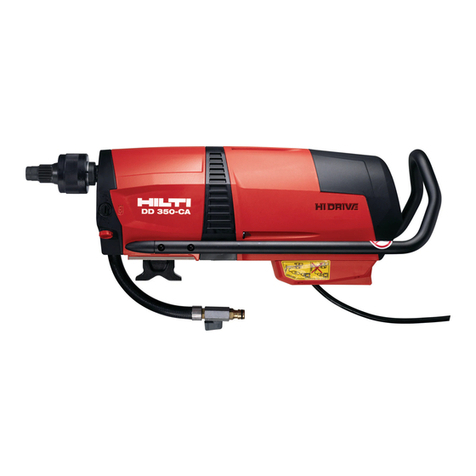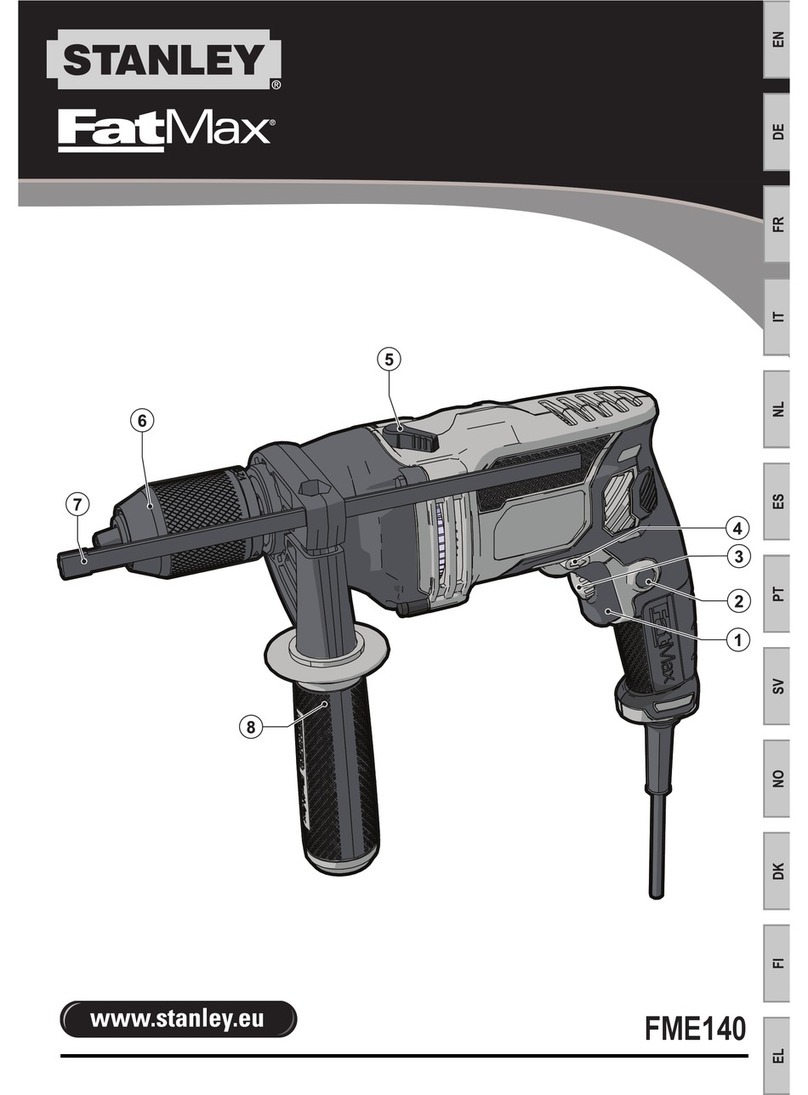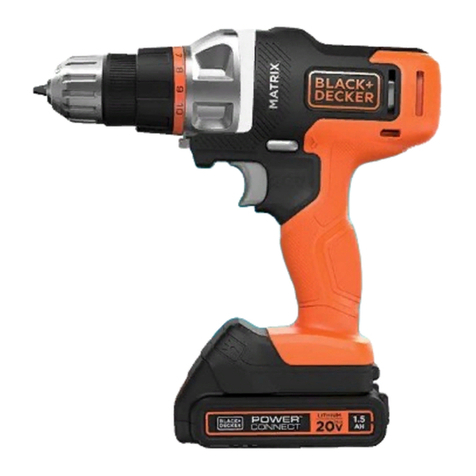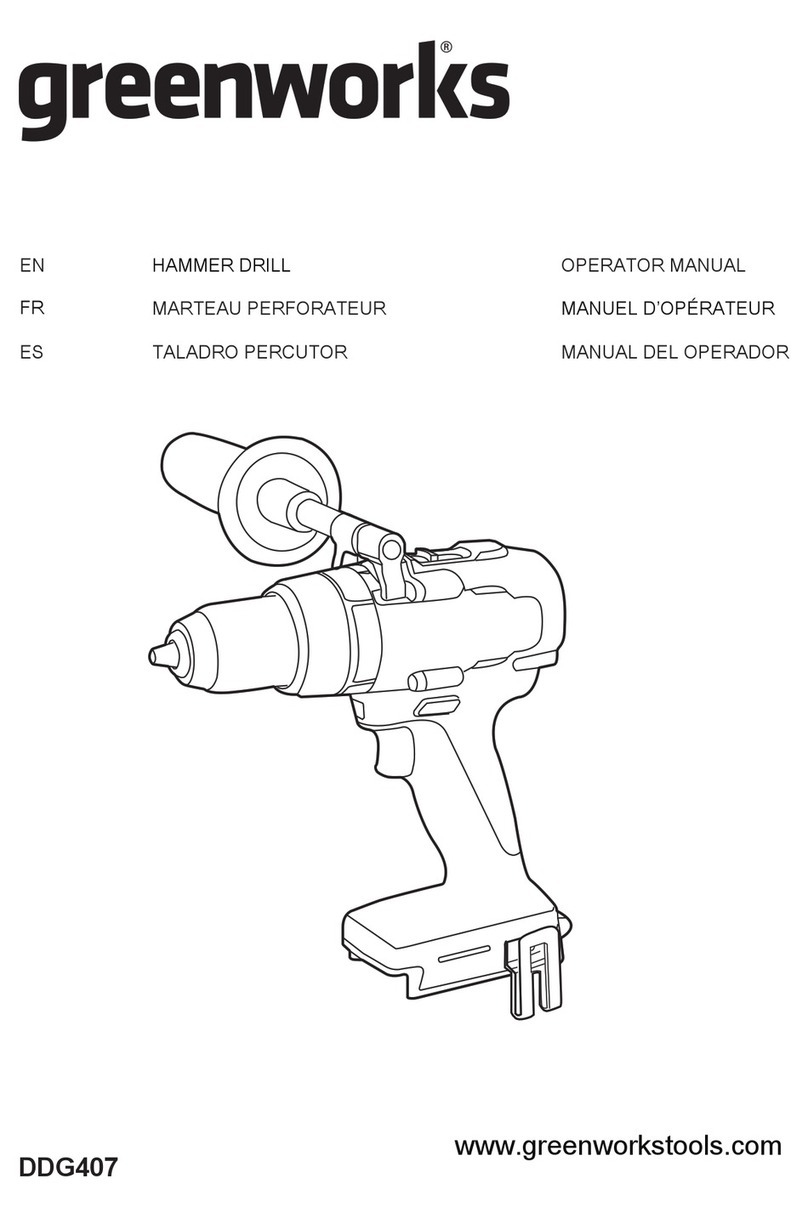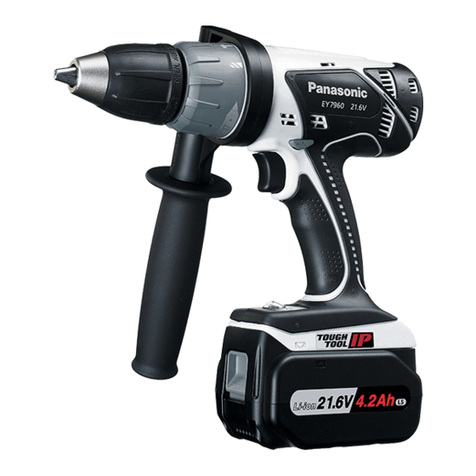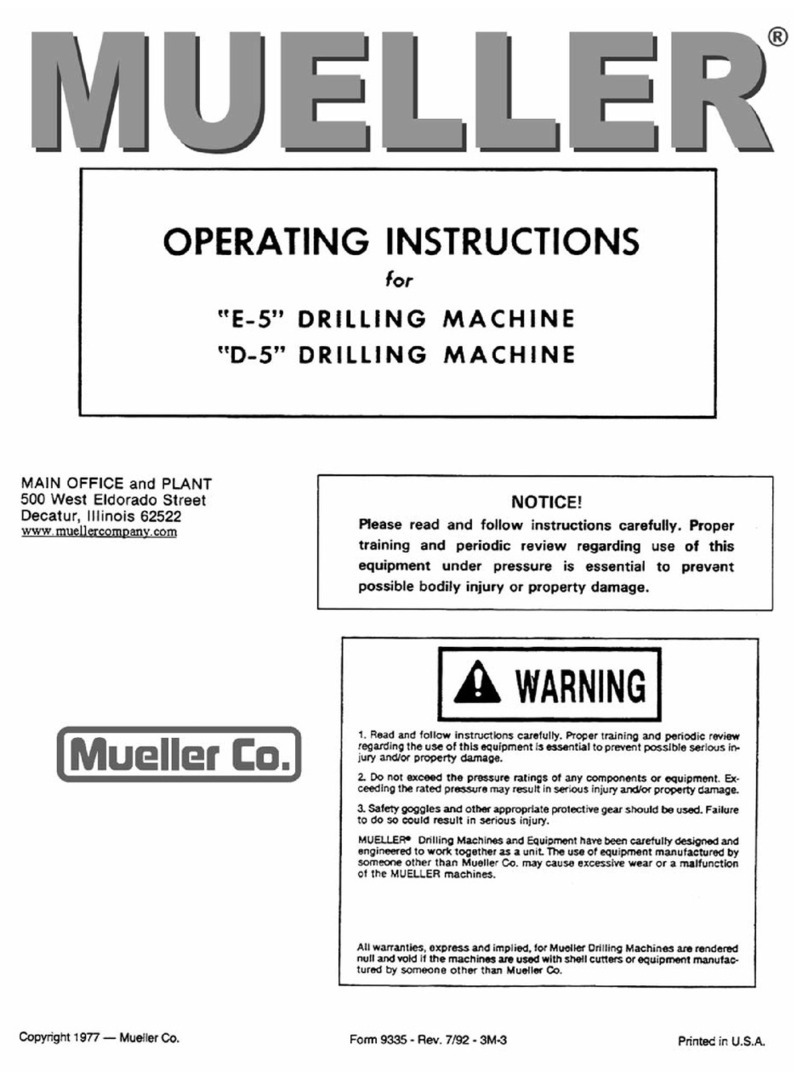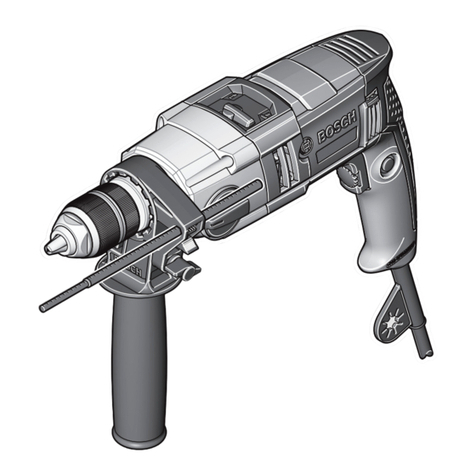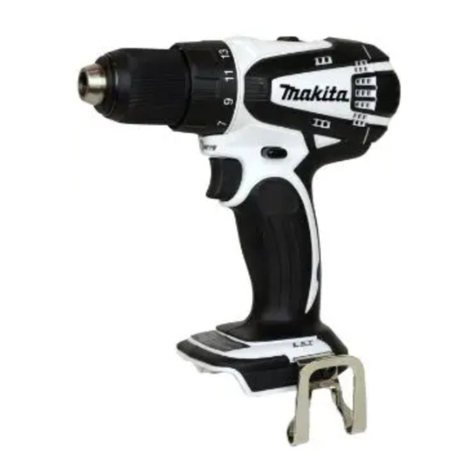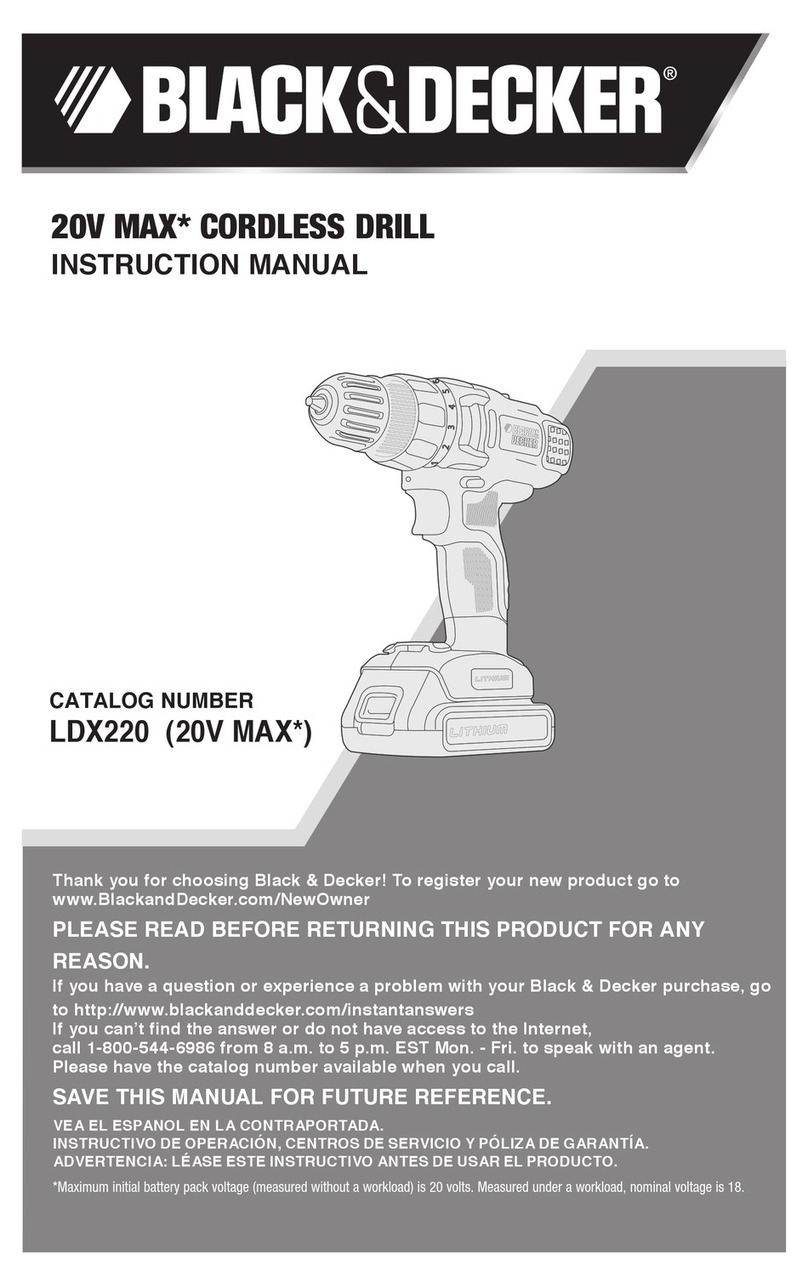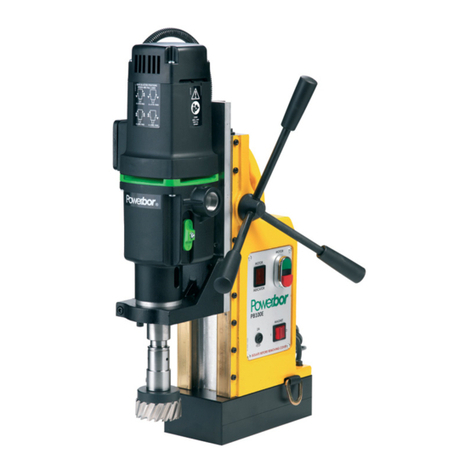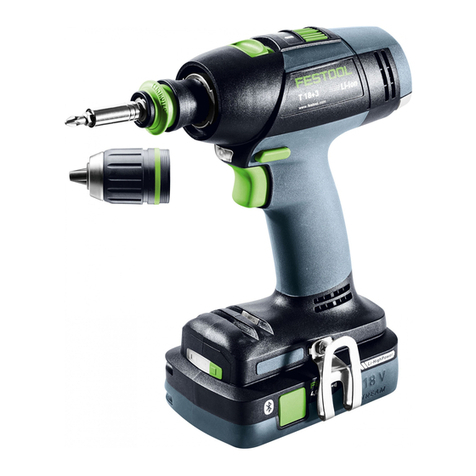
4 English 238044 *238044*
▶Improve the blood circulation in your fingers by relaxing your hands and exercising your fingers
during breaks between working.
▶The power tool is not intended for use by debilitated persons who have received no special training.
▶Keep the power tool out of reach of children.
▶Avoid touching rotating parts. Switch the power tool on only after bringing it into position at the
workpiece. Touching rotating parts, especially rotating drill bits or other accessories, may lead to injury.
▶Always lead the supply cord and extension cord away from the power tool to the rear while
working. This helps to avoid tripping over the cord while working.
▶Dust from materials, such as paint containing lead, some wood species, concrete / masonry / stone
containing silica, and minerals as well as metal, may be harmful. Contact with or inhalation of the dust
may cause allergic reactions and/or respiratory or other diseases to the operator or bystanders. Certain
kinds of dust are classified as carcinogenic such as oak and beech dust, especially in conjunction with
additives for wood conditioning (chromate, wood preservative). Material containing asbestos may be
handled only by specialists. Use a dust removal system whenever possible. To achieve a high level
of dust collection, use a suitable vacuum cleaner. When indicated, wear a respirator appropriate
for the type of dust generated. Ensure that the workplace is well ventilated. Follow national
requirements for the materials you want to work with.
Careful handling and use of power tools
▶Secure the workpiece. Use clamps or a vice to secure the workpiece. The workpiece is thus held
more securely than by hand and both hands remain free to operate the power tool.
▶Ensure that the accessory tools used are compatible with the tool-holder system and that they are
correctly secured in the tool holder.
▶In the event of a power failure or interruption in the electric supply, switch the power tool off,
unplug the supply cord and release the switch lockbutton (if applicable). This will prevent accidental
restarting when the electric power returns.
▶Avoid applying an excessive amount of grease to the drill bit connection end. Grease may otherwise
be forced out of the chuck when the power tool is in operation.
Electrical safety
▶Before beginning work, check the working area (e.g. using a metal detector) to ensure that no
concealed electric cables or gas and water pipes are present. External metal parts of the power tool
may become live, for example, when an electric cable is damaged accidentally. This presents a serious
risk of electric shock.
▶Check the power tool’s supply cord at regular intervals and have it replaced by a qualified specialist
if found to be damaged. If the power tool’s supply cord is damaged it must be replaced with
a specially-prepared and approved supply cord available from Hilti Customer Service. Check
extension cords at regular intervals and replace them if found to be damaged. Do not touch the
supply cord or extension cord if it is damaged while working. Disconnect the supply cord plug
from the power outlet. Damaged supply cords or extension cords present a risk of electric shock.
▶Dirty or dusty power tools that have been used frequently for work on conductive materials should
be checked at regular intervals at a Hilti Service Center. Dust (especially dust from conductive
materials) or dampness adhering to the surface of the power tool may, under unfavorable conditions,
lead to electric shock.
Work area
▶Keep bystanders a safe distance away from work area. Anyone entering the work area must wear
personal protective equipment. Fragments of workpiece or of a broken accessory may fly away and
cause injury beyond the immediate area of operation.
▶If the work involves breaking right through, take the appropriate safety measures at the opposite
side. Parts breaking away could fall out and / or fall down and injure other persons.
Personal protective equipment
▶Wear protective gloves. The rotary hammer may get hot during use. There is a risk of injury (cutting or
burning) if the accessory tool is touched while changing it.
3 Description
3.1 Intended use
The product described is an electrically powered rotary hammer. It is designed for drilling in concrete,
masonry and natural stone.
Hilti products are designed for professional use and may be operated, serviced and maintained only by
trained, authorized personnel. This personnel must be informed of any particular hazards that may be
